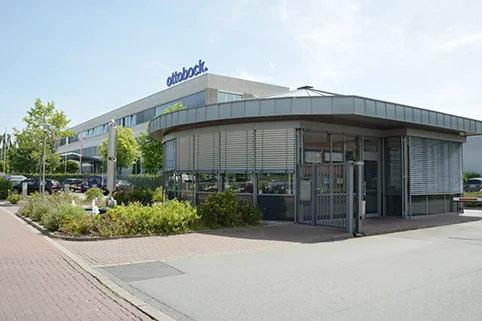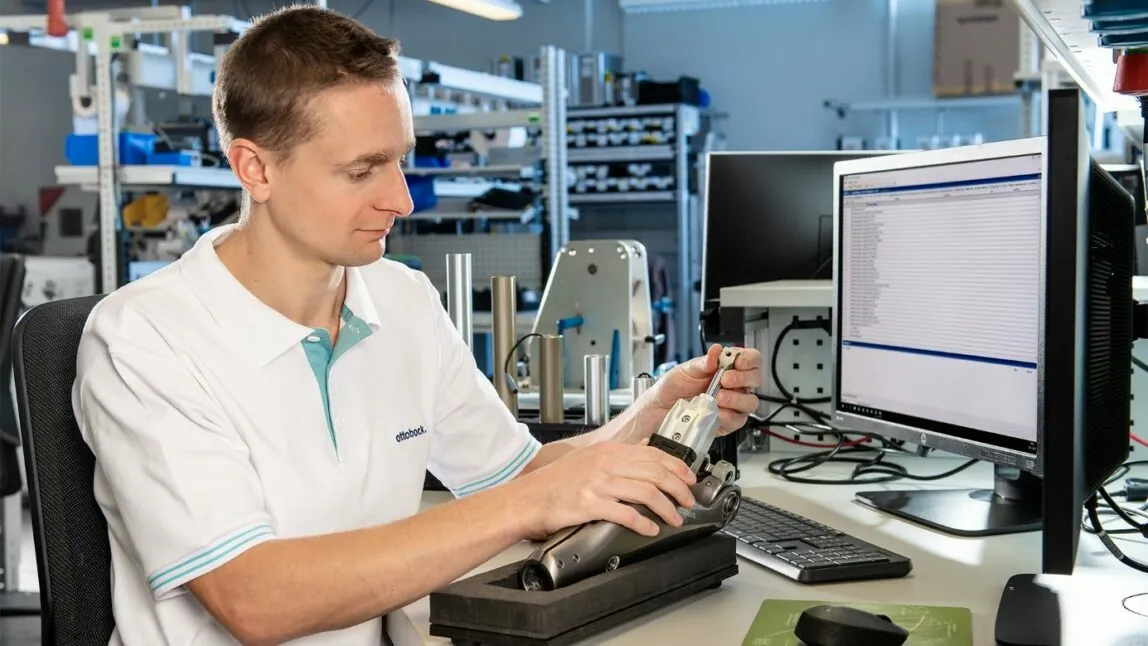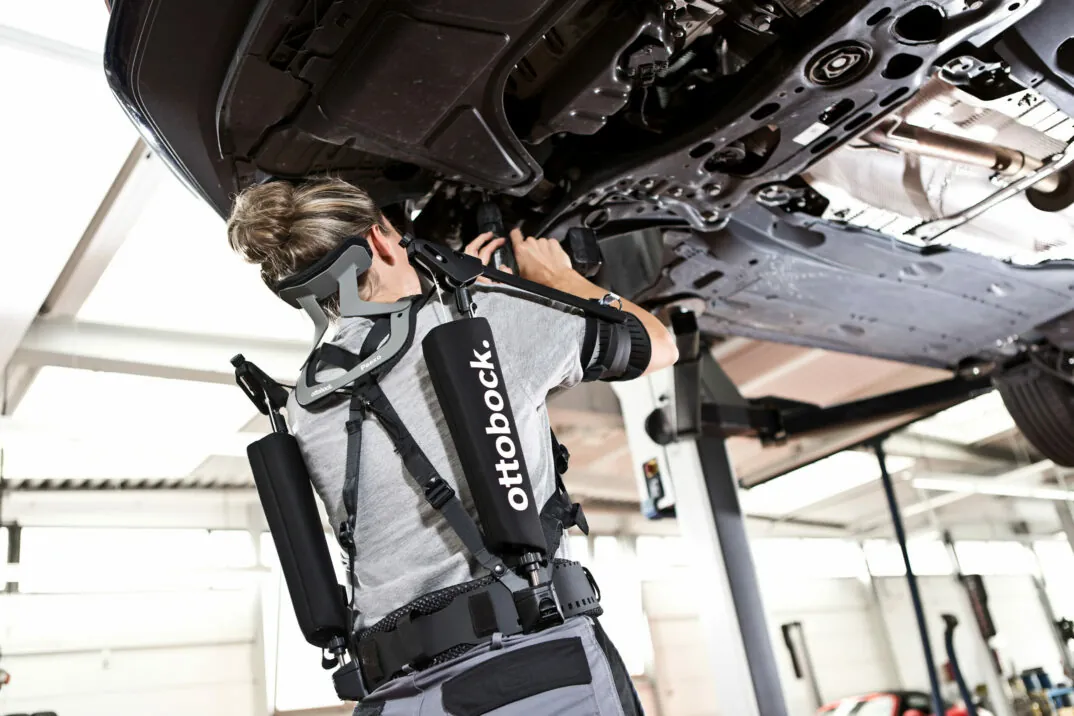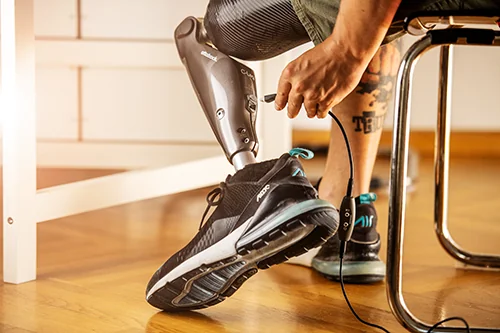Highlight

Successful together – our valantic Team.
Meet the people who bring passion and accountability to driving success at valantic.
Get to know usOTTOBOCK SE & CO. KGAA
Because capacity planning was time-consuming, Ottobock implemented valantic sales & operations planning (S&OP) software wayRTS, which enabled this orthopedic technology company to increase its productivity.

This article appeared in the special publication “Software in Logistics” of Logistik Heute 1/2-2023.
Because capacity planning was time-consuming, Ottobock implemented sales & operations planning software, which enabled this orthopedic technology company to increase its productivity.
A rather rudimentary and complex capacity planning based on “SAP ECC” and “Microsoft Excel” was one of the challenges in Ottobock’s value chain. That’s why this orthopedic technology company wanted to implement the “waySuite” advanced planning and scheduling software as additional standard software alongside SAP. The Ottobock project team for implementing APS software was aware that processes and software must be coordinated so that a digitalization step such as partially automated demand and production planning can be as effective as possible.
When cooperation with the IT consulting company valantic began in August 2020, Ottobock’s planners also wanted to hear from the experienced supply chain specialists what “best practices” were. For example, a series of PP/DS process workshops (SAP Production Planning and Detailed Scheduling) with representatives from production planning and logistics, business process management, production, purchasing, SAP PP/MM application management, and sales were among the first measures. The previous planning organization, responsibilities, and processes were examined, and optimization potential was sought based on representative products and work plans. After a planning concept had been developed, a standardized procedure for using waySuite followed.

About Ottobock SE & Co. KGaA
Ottobock has been developing health care solutions for people with reduced mobility since 1919. As a “Human Empowerment Company,” Ottobock provides people with freedom of movement, improves their quality of life, and makes them more independent. Ottobock employs more than 9,000 people at 60 locations around the world.
According to the company, it is the world market leader in wearable human bionics. It establishes standards and relies on digitalization. Ottobock has been transferring its biomechanics expertise to exoskeletons for ergonomic workplaces since 2018. It coordinates its international activities from its headquarters in Duderstadt (Lower Saxony).
Ottobock, which has been supporting the Paralympic Games with its technical know-how since 1988, generated sales of EUR 1.19 billion in 2021.

The company headquarters in Duderstadt, Lower Saxony, and the Blagoevgrad plant in Bulgaria started by implementing the software suite for sales and operations planning. The biggest challenge there was with the manufacturing tools for producing prostheses: Molds for the production of prosthetic feet increasingly represented a bottleneck in production capacities. Like the manufacturing tools, available capacities were mapped in the combination of employee pool workplaces and workplace hierarchies in the real-time APS software “wayRTS.” This was a prerequisite for ATP/CTP feasibility tests to determine realistic delivery dates and the automatic optimization of production control with “wayOPT.”
By July 2021, the APS software had been completely implemented in the main plant. “It was helpful to consult planners from the other plants back then and develop a standardized daily routine and a uniform approach in wayRTS,” explains Bastian Steffens, Supply Chain Process Specialist and Project Manager of the APS project at Ottobock. After the centralized demand planning, specific production planning was done in the individual plants. “We all work with the same lists and views,” says Steffens. “This gives us a high degree of transparency and defines the processes across plants.”

Cross-plant supply chain branching was one of the topics in the next step, when waySuite was implemented at the Vienna plant between October 2021 and May 2022. Ottobock manufactures mechatronic knee and arm prosthetics there. This production depends on the Ottobock sites in Duderstadt and Blagoevgrad, as they supply milled parts and pre-assembled components. A large number of product variants makes planning difficult. “Our colleagues in Vienna use the scenario technology of the software particularly intensively,” reports Steffens. In wayRTS, it is possible to simulate production planning for various initial scenarios in real time without changing the valid planning status. “This will prepare colleagues for different situations with regard to material availability and processing capacities,” explains the Supply Chain Process Specialist.

Ottobock also offers a variety of manual and electric wheelchairs and children’s wheelchairs, as well as rehabilitation strollers and seating and positioning solutions. These wheelchairs are produced in Königsee, Thuringia, the hometown of the company founder Otto Bock. wayRTS has been implemented there in the third phase since May 2022, since this location presents particular challenges.
After all, the variety is enormous. Sales deals with various questions regarding the individual design of wheelchairs: In total, there are millions of possible design combinations. The effort required for production also varies. The aim was therefore to achieve even utilization of the workplaces with production planning in wayRTS.
The wayRTS program fetches the parts lists from SAP for this purpose. Due to the high share of customer-specific products – more than 90 percent of wheelchairs are manufactured individually – the variant configuration including mapping configurations from quotations was the decisive adaptation of wayRTS.

Even if the final roll-out is not yet complete, Ottobock is already drawing positive conclusions: With the capacitive optimization of workplaces and manufacturing tools, it was possible to create balanced production plans across the year.
Ottobock benefits from greater transparency in terms of demand, inventories, and bottlenecks. At the same time, the company was able to significantly reduce overall planning and control costs. The planners are now able to simulate queries or order loads as scenarios in real time without disturbing ongoing production.
After the simulations are complete, you can transfer the selected variant to the production system. Overall, there has been an increase in productivity and better planning has already resulted in a significant increase in on-time delivery from production.